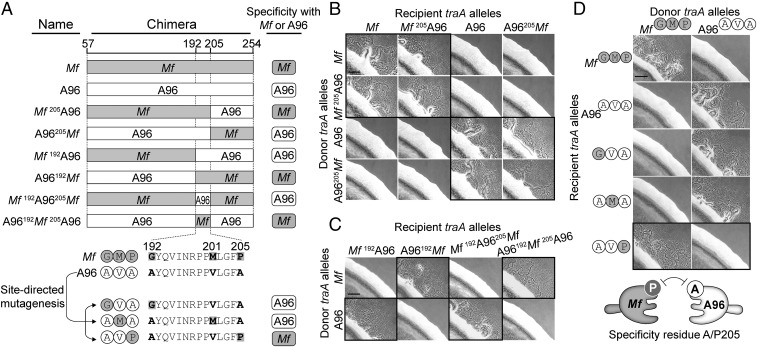Fig. 4.
A single residue (A/P205) governs the specificity of TraAMf–TraAA96 recognition. (A) Schematics of chimeric variable domains made between TraAMf (gray) and TraAA96 (white). The C-terminal region (not involved in specificity) is not shown. Chimeric junction sites are indicated. Bottom illustration shows mutagenesis strategy on a traA allele (pPC11) containing the TraAA96 subregion. Recognition compatibilities of the mutants with parental alleles are shown at the right (corresponding stimulation data shown in B–D). (B) Stimulation assays among chimeric and parental traA alleles. Mixtures that show recognition are highlighted with black frames. (C) Same as B but with different traA chimeras. (D) Stimulation assays of point mutants against parental alleles. The black-bordered micrographs show that a A205P substitution changes specificity. Table S1 for plasmids/strain details. Cartoon summarizes the A/P205 differences that underlie incompatibility. (Scale bar, 200 μm.)

